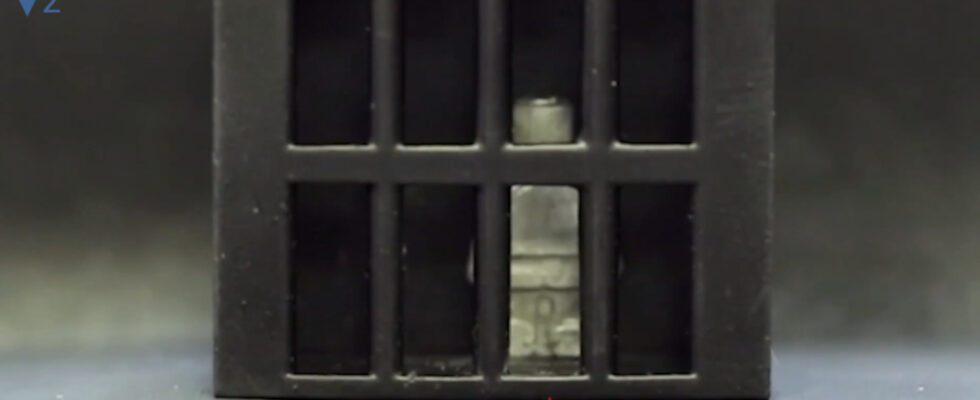This small robot could be used both in the medical sector and to perform tasks on electronic systems that are difficult to access.
No, this is not an excerpt from the trailer for the future film of the popular SF saga. Researchers at the Chinese University of Hong Kong have succeeded, by using a material with specific properties, in changing a defined structure to fulfill very specific objectives. If we are still far from the T-1000, the concept is no less impressive.
A prototype capable of going where rigid robots cannot reach
Gallium has the interesting characteristic of having a very low melting point. Melting at around 29°C, it can be controlled remotely by injecting it with magnetic particles. If it is thus possible to move it, it is also easy to heat it by magnetic induction and to let it cool using the ambient temperature.
The researchers are thus able to make this robot cross many obstacles that a more rigid device could not overcome. They even allowed themselves to replay an emblematic scene from the Terminator 2 film, by having a Lego-shaped gallium-based structure cross prison bars.
While the performance is as impressive as it is fun, the beauty of such a machine is that there’s no need for external sources to cool or heat it, or wired connections to run it. The prototypes shown are also very small, which allows them to get into hard-to-reach places.
Sea cucumber as inspiration
The study foresees several fields of action for such a robot. Indeed, in addition to being able to move from point A to point B, it is also capable of jumping over obstacles, climbing walls or even splitting before reforming.
It has, for example, been demonstrated that it would be possible for him to eject a foreign body from a stomach, or to administer medication on demand. It could also be used in electronic systems that are difficult to access, and therefore serve as a soldering element, as a conductor once in place, or even act as a universal screw.
Carmel Majidi, one of the engineers responsible for the research, concludes: What we show is only a one-time demonstration, proof of concept, but much further study will be needed to examine how this could really be used for drug delivery or foreign body removal. “.
The inspiration would come from animals such as sea cucumbers, which are able to go from a rigid state to a flaccid state to increase their carrying capacity, or better protect themselves from possible dangers. Roboticists are continuously inspired by nature, so we can expect many more concepts and innovations to come. Provided that nature and robots do not turn against us simultaneously…
Source : euro news, matter

14